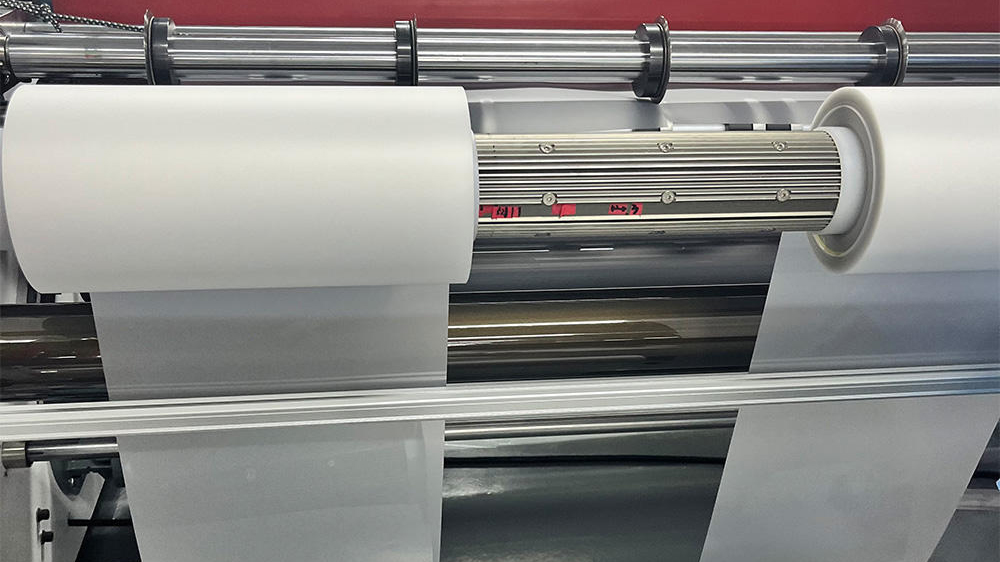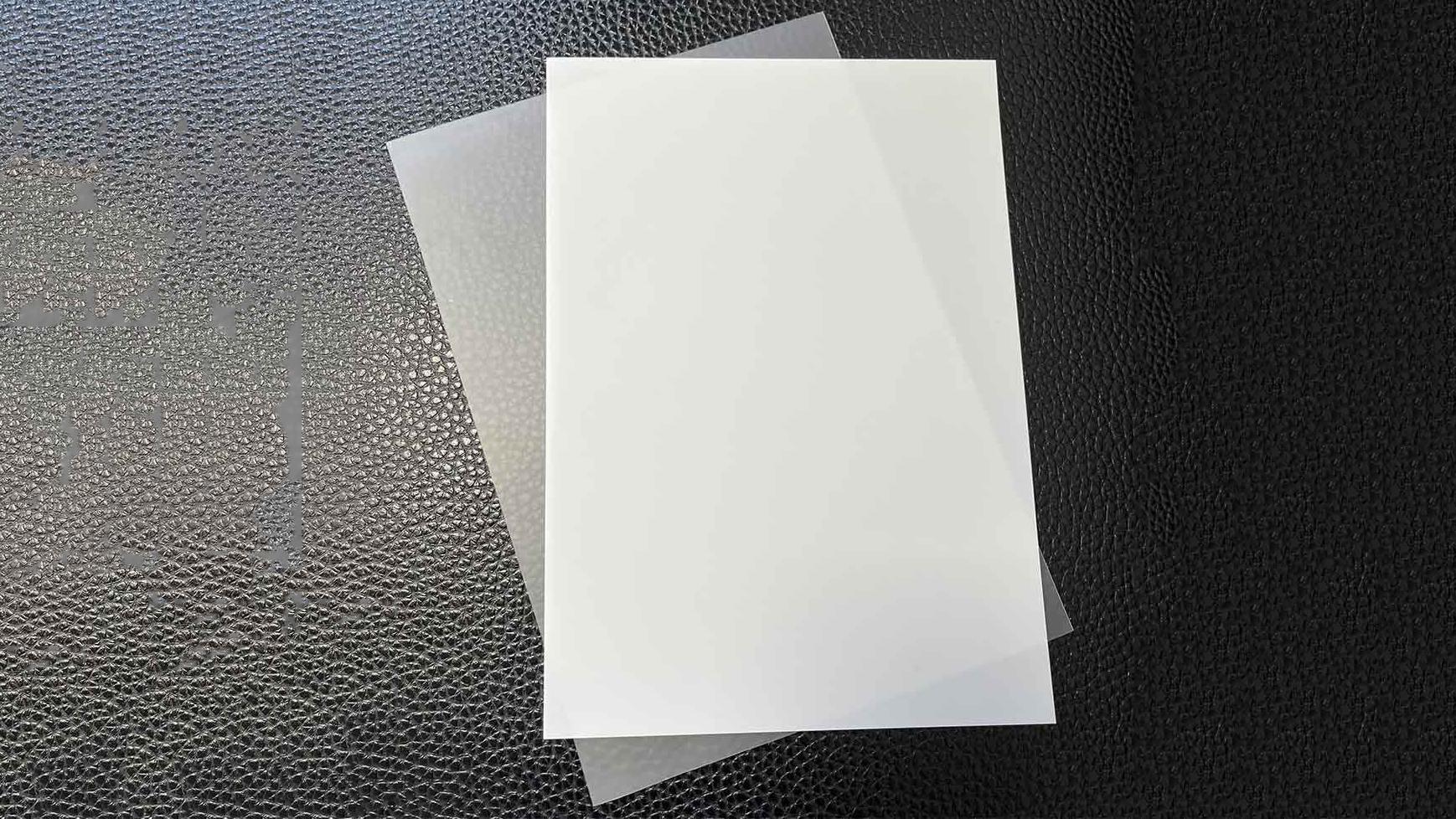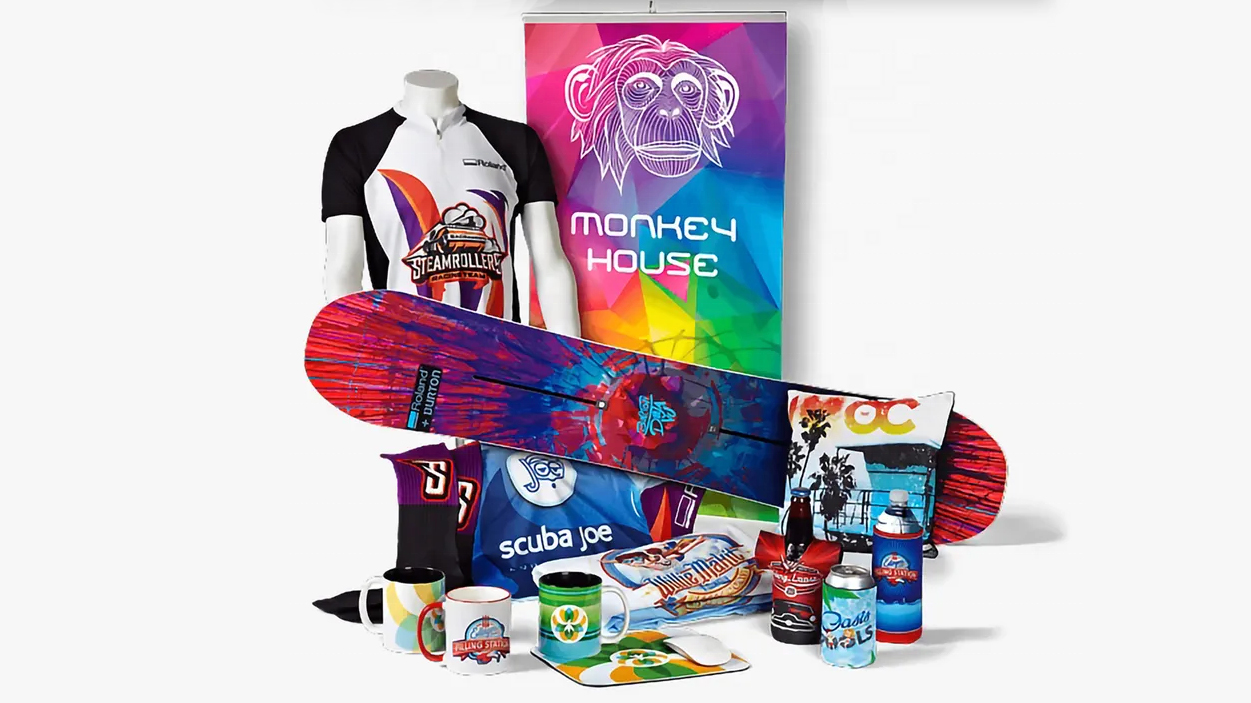
When you compare DTF Film vs. 3D Sublimation Film, you can see they are distinct in their applications. DTF Film can print on a variety of fabrics and surfaces, while 3D Sublimation Film is most effective on polyester and coated items. DTF Film produces bright colors and has a textured finish, whereas sublimation offers smooth prints that resemble photographs. Both types are durable and have a long lifespan. DTF Film is ideal for small or custom jobs, while sublimation is more suitable for large orders and provides lower costs per item.
The DTF printing market might reach $1.7 billion by 2026.
Dye sublimation printing is already at $14.9 billion and is growing rapidly.
Attribute | DTF Film | 3D Sublimation Film |
|---|---|---|
Material Compatibility | Works on many fabrics and surfaces | Best for light polyester and coated items |
Print Quality | Bright colors and a textured look | Smooth finish that looks like a photo |
Durability | Resists fading, scratches, and tears | Colors stay inside for long-lasting results |
Cost | Good for small or medium jobs | Best for big orders and low cost per item |
Production Volume | Fast for small batches and on-demand jobs | Works well for big orders but takes more time |
Understanding these differences between DTF Film vs. 3D Sublimation Film helps you choose the best method for your project.
Key Takeaways
DTF Film works on many fabrics like cotton and polyester. This makes it good for custom jobs.
3D Sublimation Film is best for hard, coated surfaces. It creates prints that look like photos and last longer.
Pick DTF Film for small batches and custom designs. Use sublimation for big orders and bulk printing.
DTF Film gives bright colors and sharp details. Sublimation gives smooth and clear images.
Think about your project needs and what materials you use. This helps you choose between DTF Film and 3D Sublimation Film.
DTF Film Overview

How It Works
DTF Film printing uses a step-by-step process that lets you create colorful designs on many fabrics. Here is how you can use this method:
Print your design onto a PET film using a DTF printer.
Apply a layer of hot melt powder to the printed film.
Cure the powder by heating it, which makes it sticky.
Use a heat press to transfer the design from the film onto your garment.
Peel off the film after pressing and check the final print.
This process helps you get sharp and vibrant prints without needing to pretreat your fabric. You can use DTF Film for both small and large projects.
Features
DTF Film stands out because of its unique features. You can choose from different peel types, such as cold, warm, hot, or instant peel. Each type gives you a different peeling experience. The release layer can be oil-based or water-based, which affects how durable and affordable your prints are. You also get to pick between matte and glossy finishes, so your designs can look just the way you want. DTF Film comes in several thicknesses, like 50um, 75um, and 100um. Thicker films can make your prints last longer and look more professional.
Feature Type | Description |
|---|---|
Cold, Warm, Hot, and Instant Peel options | |
Release Layer | Oil-Based or Water-Based |
Surface Effect | Matte or Glossy finish |
Base Film Thickness | 50um, 75um, 100um |
Tip: Choosing the right combination of features can help you get the best results for your project.
Compatible Materials
You can use DTF Film on a wide range of materials. This makes it more versatile than many other printing methods. Here is a table showing which materials work best:
Material | Compatibility Details |
|---|---|
Strong adhesion and vibrant prints | |
Polyester | Bright prints and good adhesion |
Nylon | Works, but handle with care due to heat |
Silk | Compatible for printing |
Leather | Can be used effectively |
Denim | Good results, no pretreatment needed |
Chemical Fiber | Compatible for printing |
When you compare DTF Film vs. 3D Sublimation Film, you will notice that DTF Film works on more types of fabrics. This flexibility helps you take on many different printing jobs.
3D Sublimation Film Overview
How It Works
3D sublimation film helps put images on curved items. First, you print your design on special sublimation film with a printer. Then, you wrap the film around your object. You put the wrapped item in a 3D vacuum heat press. The machine uses heat and pressure to change the dye into gas. The gas goes into the surface of your item. This makes the image stay forever. This method is great for mugs, phone cases, and things with curves or edges. The design will not peel or fade because the ink becomes part of the item.
Features
3D sublimation film is known for being strong and reliable. It gives you bright and clear images. The film can move and bend during the process without losing quality. It also stands up to weather and sunlight, so your prints last longer. You can use this film on items with tricky shapes, and the design will not get messed up. This process also makes less waste, so it saves money compared to old ways.
Feature | Description |
|---|---|
Superior Color Fidelity | Achieves over 98% color transfer with vibrant, high-definition results. |
Enhanced Durability & Resistance | Maintains integrity during stretching; resists weather and UV exposure. |
Versatility for Complex Shapes | Transfers designs onto curved or 3D surfaces without distortion. |
Production Efficiency & Cost-Effectiveness | Minimizes material loss compared to traditional printing methods. |
Tip: If you want your designs to look like real photos and last a long time, 3D sublimation film is a smart choice.
Compatible Materials
You can use 3D sublimation film with many heat-safe materials. These materials must handle high heat, up to 230°C (446°F), during the process. Here are some common choices:
Heat-safe silicone membranes work well with 3D sublimation machines like the ST-3042 and ST-1520.
Many coated items, like mugs, phone cases, and metal plates, accept the sublimation dyes.
Each pack of silicone membranes usually has 10 sheets, so you have enough for many projects.
When you compare DTF Film vs. 3D Sublimation Film, you will see that 3D sublimation film works best for hard, coated surfaces and items with tricky shapes. This makes it a great choice for custom gifts and special products.
DTF Film vs. 3D Sublimation Film
Material Compatibility
DTF Film and 3D Sublimation Film work on different materials. DTF Film prints on cotton, polyester, nylon, silk, leather, denim, and chemical fiber. You do not need to treat the fabric first. This makes DTF Film good for custom jobs. 3D Sublimation Film works best on light polyester and coated items. These surfaces must handle high heat. If you want to print on mugs, phone cases, or metal plates, use sublimation. For t-shirts, hoodies, and mixed fabrics, DTF Film gives you more choices.
Tip: Use DTF Film for many types of fabrics. Pick 3D Sublimation Film for hard, coated surfaces.
Print Quality
You want your prints to look bright and clear. DTF Film and 3D Sublimation Film both give strong color. DTF Film makes colors pop and shows sharp details. You see fine lines and crisp edges. Sublimation printing makes smooth designs. The colors blend like a photo. Here is a table to help you compare:
Printing Method | Color Vibrancy | Resolution |
|---|---|---|
DTF Printing | Higher vibrancy and sharpness | Sharper details and finer lines |
Sublimation Printing | Vivid, continuous-tone designs | Excellent color vibrancy |
If you want bold colors and sharp lines, choose DTF Film. If you want smooth, photo-like prints, sublimation is a good pick.
Durability
You want prints that last after washing and daily use. DTF Film and 3D Sublimation Film have different durability. DTF Film resists fading, scratches, and tears. The prints stay smooth and stretch well. They do not crack and last a long time. Sublimation prints are durable but do not work on all fabrics. DTF Film meets ASTM standards for wash and abrasion resistance. Studies show DTF Film lasts longer than screen printing on many fabrics. Here is a table to show the results:
Film Type | Wash Resistance | Abrasion Resistance | Notes |
|---|---|---|---|
DTF Film | High | High | Smooth, elastic, long-lasting |
3D Sublimation Film | Moderate | Moderate | Good durability, less versatile |
ASTM Standards | Met/Exceeded | Met/Exceeded | DTF transfers meet all standards |
NIST Study | More durable | Less durable | DTF outperforms screen printing |
If you want prints that stay bright and last longer, DTF Film is a good choice.
Cost
You want to save money when printing. DTF Film and 3D Sublimation Film have different costs. DTF Film equipment costs more at first, but supplies are cheaper. You use less white ink and do not need special liquids. Sublimation equipment costs less for beginners, but you need coated items and more white ink. Here is a table to compare costs:
Category | DTF Film Costs | 3D Sublimation Film Costs |
|---|---|---|
Entry-Level Equipment | $2,500 – $3,000 | < $1,000 |
Industrial Equipment | $15,000+ | Up to $25,000 for mid-range DTG |
Consumables Cost | Less expensive than DTG inks | Over $3,500 for complete setup |
White Ink Usage | Less white ink required | More white ink required |
Transfer Films | Inexpensive high-quality options | Pre-treatment liquids and equipment needed |
DTF transfers work on many fabrics without special treatment, so you save money.
DTF sheets cost less than sublimation paper, and adhesive powder is cheaper.
If you have a small business or want to print on many fabrics, DTF Film helps you spend less.
Production Volume
Think about how many items you want to print. DTF Film and 3D Sublimation Film work best for different needs. DTF Film is fast for small batches and custom jobs. You can print designs quickly. Sublimation works well for big orders. You pay less per item when printing many pieces. If you want to print hundreds of mugs or phone cases, sublimation is efficient. For custom t-shirts or small runs, DTF Film is better.
Note: DTF Film is flexible for small jobs. 3D Sublimation Film is best for printing many items.
Pros and Cons
DTF Film Pros and Cons
When you look at DTF Film, you see many strengths that make it popular for custom printing. You can print on cotton, polyester, leather, and more. This versatility helps you handle many types of projects. DTF Film gives you bright, detailed prints that look great, even on small designs. You do not need to spend a lot on setup, so it works well for small businesses or custom orders. The process is easy to learn, so you can start printing quickly.
Advantage | What It Means for You |
|---|---|
High-Quality Prints | Your designs look vivid and sharp, even with fine details. |
Versatility | You can print on many materials, not just one type of fabric. |
Durability | Prints last through many washes and regular use. |
Fast Graphics Prep | You can prepare designs quickly, which helps with tight deadlines. |
Low Production Costs | You save money, especially on small or custom runs. |
Easy to Learn | You do not need much training to get started. |
No Setup Costs | You avoid expensive setup fees for each new design. |
More Production Options | You can print both large and small batches without pretreatment. |
Tip: DTF Film helps you grow your business by offering more choices and saving money on small jobs.
However, you should also know about the drawbacks. The initial cost for a DTF printer can be high. You need to keep up with regular maintenance, or you might see lower print quality or clogged nozzles. Some users worry about the environmental impact because not all films and inks are easy to recycle. DTF prints may not last as long as sublimation prints, especially after many washes. Large designs can feel less breathable, which may cause discomfort if worn for a long time.
High initial investment for equipment.
Frequent maintenance is needed for best results.
Environmental concerns with film and ink disposal.
Prints may crack or fade after many washes.
Not ideal for large, full-coverage designs due to breathability.
3D Sublimation Film Pros and Cons
3D Sublimation Film also brings unique benefits to your printing projects. You can create photo-like images with smooth finishes. This method works best on hard, coated surfaces like mugs, phone cases, and metal plates. The prints become part of the item, so they do not peel or fade easily. You can use this process for items with curves or edges, which is hard for other methods. Sublimation is efficient for large orders, so you pay less per item when you print in bulk.
Produces smooth, high-resolution images that look like real photos.
Works well on curved or 3D objects.
Prints last a long time and resist fading or peeling.
Great for high-volume production and bulk orders.
No need for pretreatment on coated items.
But, you face some limits with 3D Sublimation Film. You can only use it on polyester or specially coated surfaces. You cannot print on cotton or many natural fabrics. The process needs high heat, so not all items are safe to use. The equipment may not suit small, custom jobs because it works best for large batches. You also need to buy coated blanks, which can add to your costs.
Note: When you compare DTF Film vs. 3D Sublimation Film, think about your project needs. DTF Film gives you more material options, while 3D Sublimation Film offers unmatched image quality on hard surfaces.
Applications

DTF Film Use Cases
DTF Film is good for many custom printing jobs. Small businesses, schools, and artists use it a lot. You get bright colors and strong prints on many fabrics. Here are some ways people use DTF Film:
Custom clothes like t-shirts and hoodies let you make special designs for each person.
Promotional items such as tote bags and hats help brands get noticed at events.
Sportswear and team uniforms let you add names, numbers, and logos for every player.
Interior decorations like pillows and wall art make homes feel personal.
Webstores for schools and nonprofits offer printing for fundraisers all the time.
Influencers and bands sell merchandise in small amounts without big orders.
Streetwear and retail brands use DTF Film for bold graphics and bright colors.
DTF Film keeps designs clear, even on thick fabrics. You can print eco-friendly designs on bags and backpacks.
3D Sublimation Film Use Cases
3D Sublimation Film works well for items with curves or hard surfaces. It is best for coated products and light polyester. Here is a table with common uses:
Application Type | Examples |
|---|---|
Irregular Objects | Mobile phone cases, refrigerators, air conditioners |
Small Appliances | Electronic products, toilet lids, keyboards |
Decorative Items | Toys, helmets, ceramics |
You can also print on cups, tumblers, bottles, mouse pads, glass, and crystals. Many industries use 3D Sublimation Film, like automotive, aerospace, electronics, and medical devices.
Choosing the Right Method
When you compare DTF Film and 3D Sublimation Film, think about your project needs. DTF Film works on cotton, polyester, blends, and leather. You get bright colors and strong prints on both dark and light fabrics. 3D Sublimation Film gives smooth, photo-like images on coated surfaces and light polyester. If you want to print on many kinds of fabric, pick DTF Film. If you need high-quality prints on hard or curved items, choose 3D Sublimation Film. Also, think about how many items you want to print. DTF Film is great for small batches and custom jobs. 3D Sublimation Film is better for big orders and bulk printing.
Tip: Pick your printing method based on your material and design. This helps you get the best results for every project.
When you look at DTF Film and 3D Sublimation Film, you notice they are different. DTF Film works on lots of fabrics and gives bright colors. But sometimes the prints crack after many washes. Sublimation film makes images that look like photos on polyester and coated things. These prints last longer and do not peel off. New technology uses inks that are better for the environment and films that bend easily. If you want to print on many fabrics for small jobs, use DTF Film. If you need strong prints on hard surfaces and want to print a lot, choose sublimation.
Feature | DTF Film | 3D Sublimation Film |
|---|---|---|
Materials | Many fabrics | Polyester, coated items |
Durability | Good, may crack | Excellent, no peeling |
Print Quality | Vibrant, textured | Photo-like, smooth |
Always pick the printing method that fits your project best.
FAQ
What is the main difference between DTF Film and 3D Sublimation Film?
You can use DTF Film on many fabrics, like cotton and polyester. 3D Sublimation Film works best on polyester and coated items. DTF Film gives you more material options. Sublimation Film creates photo-like prints on hard surfaces.
Can I use DTF Film for mugs or phone cases?
You should not use DTF Film for mugs or phone cases. DTF Film works best on fabrics. For mugs, phone cases, or other hard items, you need 3D Sublimation Film.
Which method lasts longer after washing?
Sublimation prints last longer because the ink becomes part of the item. DTF prints stay bright and strong, but may crack or fade after many washes.
Is DTF Film or 3D Sublimation Film better for small businesses?
You can start with DTF Film if you want to print custom shirts or small batches. DTF Film costs less for small jobs. 3D Sublimation Film works better if you print many hard items at once.

